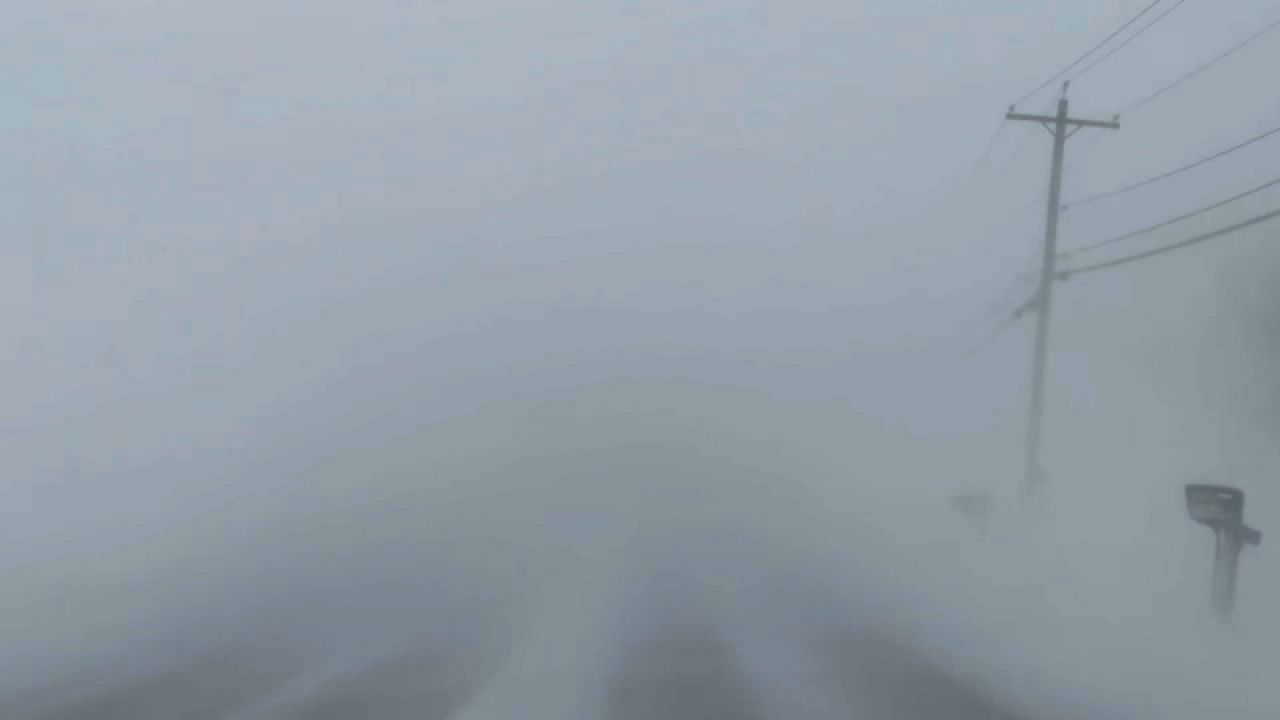A deadly winter storm that brought blizzards, heavy rain, damaging winds and subzero wind chills has exited the United States. As of Sunday afternoon, the Associated Press reports at least 28 people are dead from this icy storm because of car crashes and other hazardous impacts.
However, about two-thirds of the country is still dealing with bone-chilling cold to close out the holiday weekend into early next week. We expect temperatures to warm back up by the New Year’s holiday weekend.
Thousands of travelers are still dealing with flight cancelations and delays as we still deal in the effects of the nasty winter weather. According to tracking site FlightAware, over 10,000 flights were delayed and over 5,000 were canceled on Christmas Eve.
On Christmas Day, travel improved slightly but there have still been more than 3,000 cancellations and more than 11,000 delays through Sunday afternoon.
An arctic air mass sent subzero temperatures and brutal wind chills into the Plains and Midwest, with 20-degree temperatures reaching all the way to the Gulf Coast, and even into the northern portion of the Florida peninsula.
For many, this cold hit dangerous levels because of short frostbite times or because people simply aren't used to it.
Some places saw temperatures plummet more than 30 degrees in a matter of hours, with seeing near or new record lows.
More than 200 million people were under some form of winter weather advisory or warning on Friday, the National Weather Service said. The weather service's map “depicts one of the greatest extents of winter weather warnings and advisories ever,” forecasters said in a statement Friday.
Casper, Wyo. plummeted over 70 degrees in less than 24 hours on their way to a new all-time low temperature of -42 degrees Thursday morning. That beat the old record of -41 on Dec. 1990. Records there date back to 1939.
Strong winds behind the arctic front caused whiteout conditions.
Temperatures on Friday were 20 to 40 degrees below normal in a huge swath from the Canadian border to the Gulf of Mexico. The shiver-inducing cold stays in place into the weekend.
Texas state leaders promised there wouldn't be a repeat of the Feb. 2021 storm that overwhelmed the state's power grid and was blamed for hundreds of deaths.
Gov. Greg Abbott, in a news conference Wednesday, was confident the state could handle the increased demand for energy as the temperatures dropped.
Road treatments may not be effective in places where the cold is extreme, thus preventing any additional snow or ice that formed on the roads from melting.
Even though the bitter chill will linger on through the weekend, temperatures will gradually begin to moderate next week.
While it’s often hard to nail down the exact timing and details, this nasty system impacted travel, both on the road and in the air.
It's produced everything from heavy rain and snow, as well as powerful winds.
Even though the worst is over, bands of heavy snow will continue to stream off of Lake Erie and Lake Ontario. Along with additional accumulations reaching up to and over 2 feet in some places, powerful winds will continue to gust up to and over 60 mph.
As a result, blizzard conditions could continue through Sunday evening for parts of the Buffalo metro area, as well as for Jefferson County, where travel will be nearly impossible, let alone dangerous.
The combination of wind and cold will make how much snow falls almost irrelevant, since the impacts will essentially be the same: very poor, if not impossible, travel conditions.
Winds will gradually ease over the next couple of days, but will still stay gusty, particularly across portions of the Midwest and Northeast, reaching speeds upwards of 25 to 35 mph. Weakened tree limbs could still snap, and additional power outages are also possible.
Wintry weather even made it as far south as Central Florida, when sleet fell on Christmas morning in Brevard County, just east of Orlando.
If you must travel by car, pack an emergency winter survival kit.
Because strong winds could knock out power, know how to extend your phone's battery life.
If you live where frozen pipes could become an issue, do what you can to protect them.
Check in on your local forecast often to stay aware of what you can expect, and turn on weather notifications to be alerted to significant weather.



